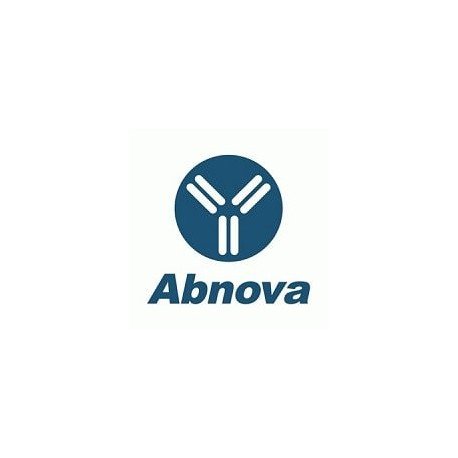Cart 0 Product Products (empty)
No products
To be determined Shipping
0,00 € Total
Prices are tax excluded
Product successfully added to your shopping cart
Quantity
Total
There are 0 items in your cart. There is 1 item in your cart.
Total products (tax excl.)
Total shipping (tax excl.) To be determined
Total (tax excl.)
Data sheet of GDF15 polyclonal antibody
| Brand | Abnova |
| Product type | Primary antibodies |
| Reactivity | Human,Mouse |
| Host species | Rabbit |
| Applications | ELISA,WB-Re |
More info about GDF15 polyclonal antibody
| Brand: | Abnova |
| Reference: | PAB16899 |
| Product name: | GDF15 polyclonal antibody |
| Product description: | Rabbit polyclonal antibody raised against full length recombinant GDF15. |
| Gene id: | 9518 |
| Gene name: | GDF15 |
| Gene alias: | GDF-15|MIC-1|MIC1|NAG-1|PDF|PLAB|PTGFB |
| Gene description: | growth differentiation factor 15 |
| Immunogen: | Recombinant protein corresponding to human GDF15. |
| Form: | Liquid |
| Recommend dilutions: | ELISA (1:500) Western Blot (1:800-1:1500) The optimal working dilution should be determined by the end user. |
| Storage buffer: | In 20 mM KH2PO4, 150 mM NaCl, pH 7.2 (0.01% sodium azide) |
| Storage instruction: | Store at 4°C. For long term storage store at -20°C. Aliquot to avoid repeated freezing and thawing. |
| Note: | This product contains sodium azide: a POISONOUS AND HAZARDOUS SUBSTANCE which should be handled by trained staff only. |
| Product type: | Primary antibodies |
| Host species: | Rabbit |
| Antigen species / target species: | Human |
| Reactivity: | Human,Mouse |
| Application image: |  |
| Application image note: | Western blot using GDF15 polyclonal antibody (Cat # PAB16899) shows detection of a 42 KDa band corresponding to purified recombinant fusion protein MBP-human GDF15. Samples were electrophoresed on a 4-20% gradient gel under reducing conditions. Primary antibody was used at 1 : 1000 in 1% BSA-TBST overnight at 4°C. DyLight649™ Goat Anti-Rabbit IgG secondary antibody was used at 1 : 20,000 in Blocking Buffer for Fluorescent Western Blotting for 30 min at room temperature. Image was captured using the BioRad Versadoc™ 4000MP Imaging System. |
| Applications: | ELISA,WB-Re |
| Shipping condition: | Dry Ice |
| Publications: | H6D polymorphism in macrophage-inhibitory cytokine-1 gene associated with prostate cancer.Lindmark F, Zheng SL, Wiklund F, Bensen J, Balter KA, Chang B, Hedelin M, Clark J, Stattin P, Meyers DA, Adami HO, Isaacs W, Gronberg H, Xu J. J Natl Cancer Inst. 2004 Aug 18;96(16):1248-54. |


